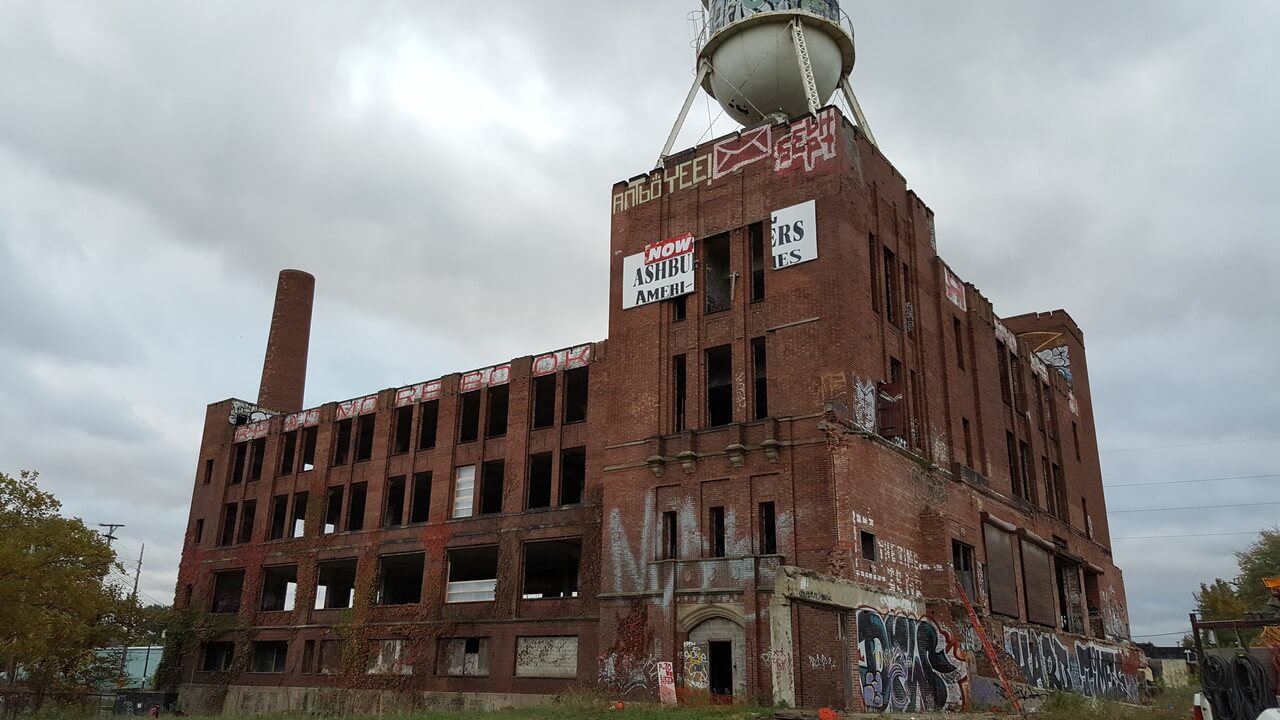Repurposing: Save Money and Avoid Delays by Attacking Excess Moisture
Posted by Matt Milos on Sep 26th 2018
 Remodeling or repurposing an existing structure creates a useful modern space with a historic feel. There are however, unique challenges to these projects that all contractors should address in order to avoid scheduling delays. Even when gutting the existing shell to leave a blank canvas, one is still forced to work within the confines of the original picture frame.
Remodeling or repurposing an existing structure creates a useful modern space with a historic feel. There are however, unique challenges to these projects that all contractors should address in order to avoid scheduling delays. Even when gutting the existing shell to leave a blank canvas, one is still forced to work within the confines of the original picture frame.

Though hard to believe from these pictures, this building is now a thriving school for gifted children.
Above is the structure that now houses the Menlo Park Academy, the picture taken before renovations took place.
Visible from I-90 on the west side of Cleveland, the building had sat vacant for over 40 years before a complete makeover turned it into a modern learning environment for children. You can read more about Menlo Park here.

Repurposing a building is exciting but comes with extra challenges.
The most common challenge with repurposing a building that has sat vacant is going to be moisture.
Concrete, brick, and wood, are all porous structures that soak up excess moisture. In an occupied and operational building, a permanent HVAC system keeps this moisture in check. Without a running system, however, that moisture quickly grows into a problem. In extreme cases, windows and doors may be missing or the roof may be leaking, leading to a deeply saturated interior. With these high levels of moisture, curing times and moisture mitigation costs significantly increase. Now add to this a temporary heat source (such as direct fired heat) that expels additional water vapor and those delays and higher costs are almost unavoidable.

A long-vacant building is sure to be saturated with moisture that needs to be tackled if the project is to be completed on time.

As if potential delays were not enough, the presence of water in the air makes it more difficult to heat. Here's the science behind this:
Latent heat added in kJ/min=
(ma) (hfg) (Delta w)= va (row a )( hfg) (delta w)
Where,
ma =mass of air in kg/min
hfg = Latent heat of water vapor associated with air= 2500 kJ/kg
w1 = Specific humidity of entering air , w2 = Specific humidity of leaving air
Delta w= w1-w2 kg of moisture per kg of dry air
row a =Density of dry air= 1.2 kg/m^3,
va= Rate of dry air flowing in m ^3/min,
Therefore, latent heat in kJ/min= va(1.2)(2500) (delta w)
Or latent heat in k W= va(1.2)(2500) (delta w) /60= 50 (delta w)

Moisture is very often the enemy of your finish schedule and budget.
Enough to make your eyes cross, right?
The bottom line is that the more moisture remains in the structure, the more costly it is to heat the building. When repurposing, the combined moisture from a heating system and the structure itself can make costs skyrocket.

The wrong temporary heating system can actually worsen the problem when it comes to humidity.
Unless, of course, you use hydronic heating.
Instead of adding moisture to the structure, a hydronic system actually dries it out.
With all combustion occurring outside the building, the system pumps hot glycol into exchangers that sit within the work area. These exchangers continually recirculate the air inside, causing evaporation instead of condensation. Instead of adding hundreds of gallons of moisture a day into the building, a hydronic system removes them. This not only reduces finish times, but also cuts fuel costs and avoids costly delays.

A hydronic system is not only more efficient, but also helps remove excess moisture from the air.
With the right technology, you can focus on getting the job done well instead of worrying about getting it done under budget and on time.


